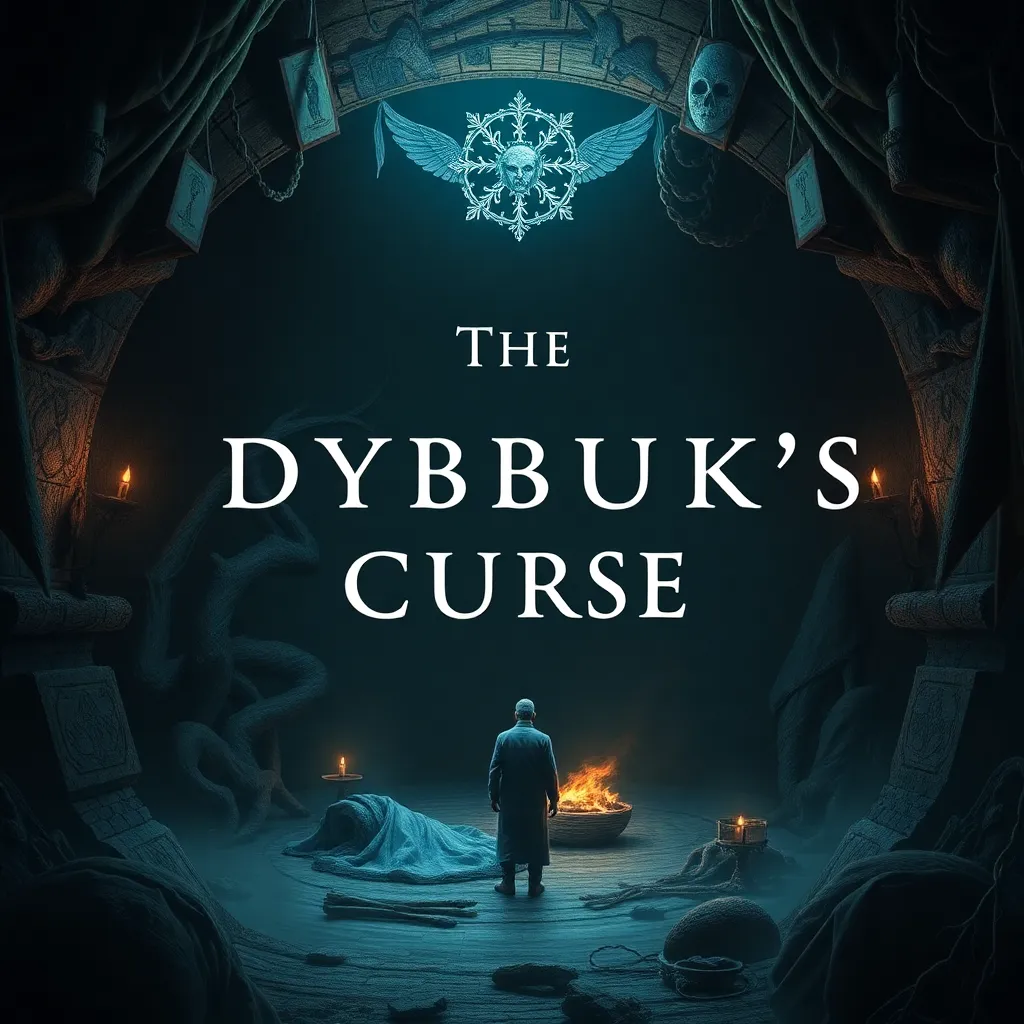The Dybbuk’s Curse: A Journey into the Supernatural’s Influence on Human Life
I. Introduction
The Dybbuk is a fascinating entity in Jewish folklore, often described as the dislocated spirit of a deceased person that possesses the living. This supernatural being is said to have a profound impact on human lives, serving as a reminder of unresolved issues, grief, and the consequences of earthly actions. In this article, we will explore the Dybbuk’s curse, delving into its historical context, its portrayal in literature and art, and its psychological implications, ultimately reflecting on how the supernatural shapes human experience.
II. Historical Context of the Dybbuk
A. Origins and evolution of the Dybbuk legend
The Dybbuk legend has its roots in Jewish mysticism, particularly within Kabbalistic teachings. The term “Dybbuk” is derived from the Hebrew word “dibbuk,” meaning “to cling.” According to folklore, a Dybbuk is the spirit of someone who has died but is unable to move on due to unfulfilled desires or unresolved conflicts. The earliest references to Dybbuks can be traced back to the 16th century, particularly in the writings of rabbi and mystic Isaac Luria, who explained that souls could return to the physical world to resolve their unfinished business.
B. Cultural significance in Jewish tradition and literature
The Dybbuk has been a powerful symbol within Jewish tradition, representing the struggle between life and death, the earthly and the spiritual. Its stories often serve to convey moral lessons about the importance of resolving one’s issues before death. The most famous narrative involving a Dybbuk is S. Ansky’s play “The Dybbuk,” first performed in 1920, which has influenced countless adaptations and interpretations in both Jewish and broader cultural contexts.
III. The Nature of the Dybbuk’s Curse
A. Characteristics and behaviors of a Dybbuk
A Dybbuk is typically characterized by its ability to possess a living person, often a vulnerable individual who is experiencing emotional turmoil. This possession is not merely a physical takeover but involves the Dybbuk expressing its own desires and unresolved issues through the host. Symptoms of possession can include:
- Unexplained changes in behavior
- Voices or sounds emanating from the host
- Physical manifestations, such as trembling or seizures
B. Common themes associated with the curse (possession, grief, unresolved issues)
The Dybbuk’s curse often revolves around themes of possession, grief, and unresolved issues. The Dybbuk is seen as a manifestation of a person’s unfulfilled desires or emotional baggage. It serves as a poignant reminder that unresolved grief can haunt not only the individual but also their loved ones. The curse highlights the importance of confronting and addressing one’s emotions and the repercussions of ignoring them.
IV. The Dybbuk in Literature and Art
A. Analysis of key literary works featuring the Dybbuk
One of the most significant literary works featuring the Dybbuk is S. Ansky’s play “The Dybbuk.” The play tells the story of a young bride possessed by the spirit of her deceased lover, exploring themes of love, loss, and the struggle between the corporeal and spiritual worlds. Other notable works include:
- Sholem Aleichem’s stories, which often incorporate Jewish folklore and supernatural elements.
- Modern interpretations in novels and graphic novels that explore the concept of possession from various angles.
B. Exploration of artistic interpretations and their cultural impact
In addition to literature, the Dybbuk has inspired numerous artistic interpretations, including paintings, films, and theatrical productions. The visual representation of the Dybbuk often emphasizes its ethereal and haunting nature, reflecting the deep emotional struggles associated with possession. Artists use the Dybbuk as a metaphor to explore themes of identity, memory, and the impact of trauma on the human psyche.
V. Psychological and Sociological Perspectives
A. The Dybbuk as a metaphor for mental illness and trauma
The concept of the Dybbuk can be viewed as a metaphor for mental illness and trauma, particularly the ways in which unresolved issues can manifest in harmful behaviors. The struggle against a Dybbuk parallels the personal battles individuals face when dealing with their psychological scars. In this sense, the Dybbuk serves as a representation of the darker aspects of human experience, illustrating how trauma can cling to individuals and affect their lives.
B. The role of folklore in shaping societal beliefs about the supernatural
Folklore plays a crucial role in shaping societal beliefs about the supernatural. The Dybbuk story reflects cultural anxieties regarding death, loss, and the afterlife. These narratives not only provide explanations for the unexplainable but also serve to reinforce community values and norms. They offer a framework through which individuals can understand their experiences and the mysteries of life and death.
VI. Modern Interpretations and Adaptations
A. The Dybbuk in contemporary films and theater
In recent years, the Dybbuk has made its way into contemporary films and theater, often reimagined for modern audiences. Films like “The Possession” (2012) and adaptations of Ansky’s play have brought the story of the Dybbuk to new generations, exploring the themes of possession and the struggle of the human spirit against external forces. These adaptations highlight the timeless nature of the Dybbuk myth and its relevance in today’s society.
B. How modern society perceives the concept of curses and possession
Modern society often approaches the idea of curses and possession with skepticism, frequently attributing such experiences to psychological phenomena. However, the fascination with the supernatural remains strong, as evidenced by the popularity of horror films, supernatural thrillers, and folklore studies. This duality reflects an ongoing human curiosity about what lies beyond the tangible world and our desire to make sense of our experiences through stories of the supernatural.
VII. Personal Accounts and Anecdotes
A. Real-life stories of individuals claiming to experience Dybbuk-related phenomena
Throughout history, there have been numerous accounts of individuals who believe they have experienced Dybbuk-related phenomena. These stories often involve sudden changes in behavior, unexplainable fears, or feelings of being watched. Such narratives contribute to the mystique surrounding the Dybbuk and highlight the powerful influence of belief on human experience.
B. Analysis of the psychological effects of belief in curses
The belief in curses, including the Dybbuk’s curse, can have significant psychological effects on individuals. The fear of possession or being cursed can lead to anxiety, paranoia, and a sense of helplessness. Conversely, the belief in supernatural interventions can also offer comfort to those grappling with grief or loss, providing a framework for understanding their experiences.
VIII. Conclusion
The Dybbuk remains a potent symbol in modern culture, representing the intersection of the supernatural and human life. Its enduring presence in literature, art, and personal narratives speaks to the complexity of human emotions and our ongoing struggle with unresolved issues. As we continue to grapple with the mysteries of life and death, the Dybbuk serves as a reminder of the importance of confronting our fears, embracing our emotions, and finding peace with our past.



